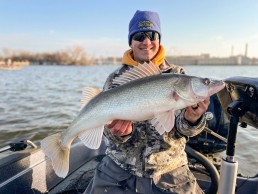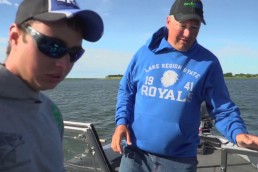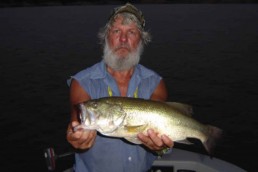Hot Walleye Action Right Now!
SHARE THIS POST
Spring walleye fishing is action packed. I remember a trip long ago on the May opener up North where we had? a hot tip from a local bartender. (Not usually the best place to get fishing info, but what the hey.) We were on a chain of five lakes and had driven through one lake, then a channel, and had to slow down because of all the other anglers heading to the same spot, jammed up at the mouth.
While sitting in that channel, waiting, I noticed a few nice hooks on the locator. What the heck? I dropped down a jig and minnow, and before it reached bottom, I had a walleye on the line. For the next four hours, Poppee and I caught walleye after walleye, while anglers drove past us heading to the bartender’s hotspot, and then driving back because the hotspot was not-so-hot.
Meanwhile, we were trying hard to hide fish from every boat that passed. Most guys waved and gave us the big-fish sign with outstretched arms, and we’d wave back giving the little-fish or no-fish sign. We fished that channel all week and saw those same boats driving up and back, disgusted. Meanwhile, we’d have two walleyes on, with our bails open, so they wouldn’t see our rods bend. Those were the days!
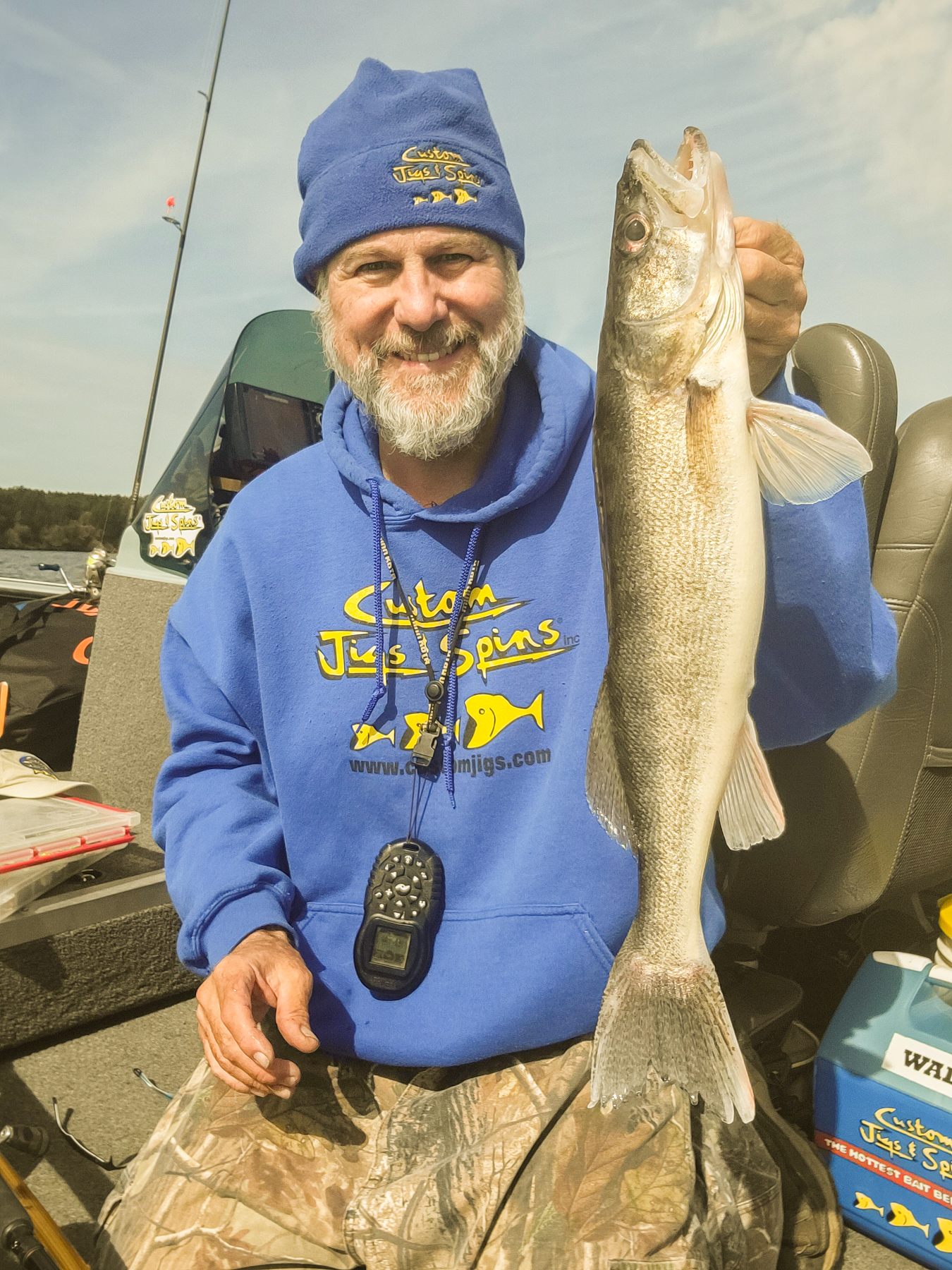
When I’m fishing a river, I’ll start at the dam and work my way downstream. When sizing up the dam and surrounding area, if no one is around, I’ll drive around, side scanning the bottom, looking for fish, drop-offs, bait and current. Sometimes, walleyes are present, but buried so tight to the bottom, and it’s a tough read. With side-scan and Panoptix, you can view fish a lot better than with a basic locator.
Walleyes can be caught in a variety of ways. You can work an area over by trolling upstream, drifting or slipping downstream, anchoring and fancasting or pitching shallow. I all depends on current and crowds.
Sometimes—well, most of the time—when I approach a dam, there are already anglers fishing in boats here and there. You must figure out what everyone is doing before making your move. You don’t want to anchor on a guy’s drift pattern; you don’t want to troll upstream when guys are drifting downstream; and you don’t want to jig between guys anchored up casting to a spot. Easy to say, but when you combine current, boats, googans (local anglers), wind and more googans into one small area, as well as shore anglers and waders, anything can happen. It’s called combat fishing for a reason!
When I approach, I already have at least four rods rigged and ready to go. I don’t want to be messin’ about. A Dubuque rig is a staple on the Mississippi; tie on a three-way swivel, add a 12-inch length of 8-pound fluorocarbon and tie on a 3/8-ounce B-Fish-N H2O jig with a 4-inch Oystershell AuthentX Moxi plastic. To the other end of the three way, add 24 inches of fluoro, a 3/32-ounce H2O jig and a AuthentX 4-inch Ringworm in Cotton Candy. If nothing happens, I’ll change colors, I’ll change colors a few more times, and then I’ll change colors. Sometimes, I’ll add minnows; sometimes I’ll add crawlers; sometimes I’ll switch out the trailer to a hook and minnow, looking for inspiration.
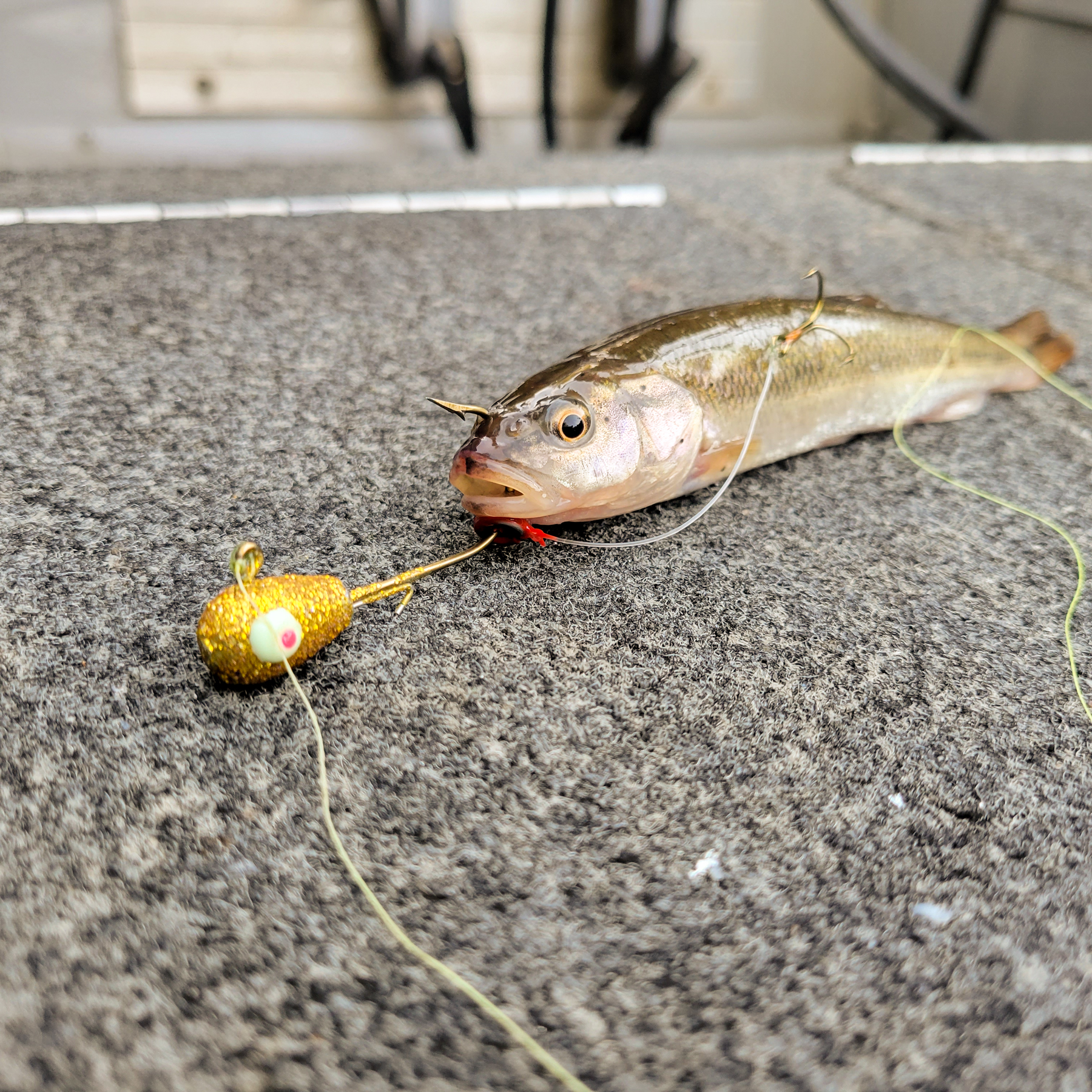
Are you enjoying this post?
You can be among the first to get the latest info on where to go, what to use and how to use it!
Another rod will have a B-Fish-N 1/8-ounce Draggin’ Jig with 4-inch AuthentX Ringworm in Stewart’s Pro Blue color, to pitch into rocks, trees and the toughest areas. It can also be used to drag behind the boat without snagging.
Another rod will have a 3/16-ounce H2O jig with a 3.25-inch AuthentX Ribb-Finn in chartreuse with a white core, used for pitchin’, dragging and jiggin’ shallow. This is the big-fish, go-to bait!
Another rod will have a plain 1/4-ounce H2O jig. Add a minnow or a half-‘crawler.
Four different jig rigs, in different colors and different weights. You’ll have to keep experimenting to get the right weight, style and color combo that works. Once you find that, it’s game on!
I’ll usually start with the Dubuque rig and slip my way downstream. Repetitive lift and drops get the plastic to move and walleyes to strike. Use just heavy enough weight to tick bottom. Too much and you’ll snag up, and you want to keep the boat moving, either by drifting or using your trolling motor. When possible, I’ll spot-lock and pitch this rig around, giving it a lot of lift and fall action on the retrieve. I’ll hang another rod in a holder with a jig and minnow, deadstick style, with a tiny stinger hook for light bites.
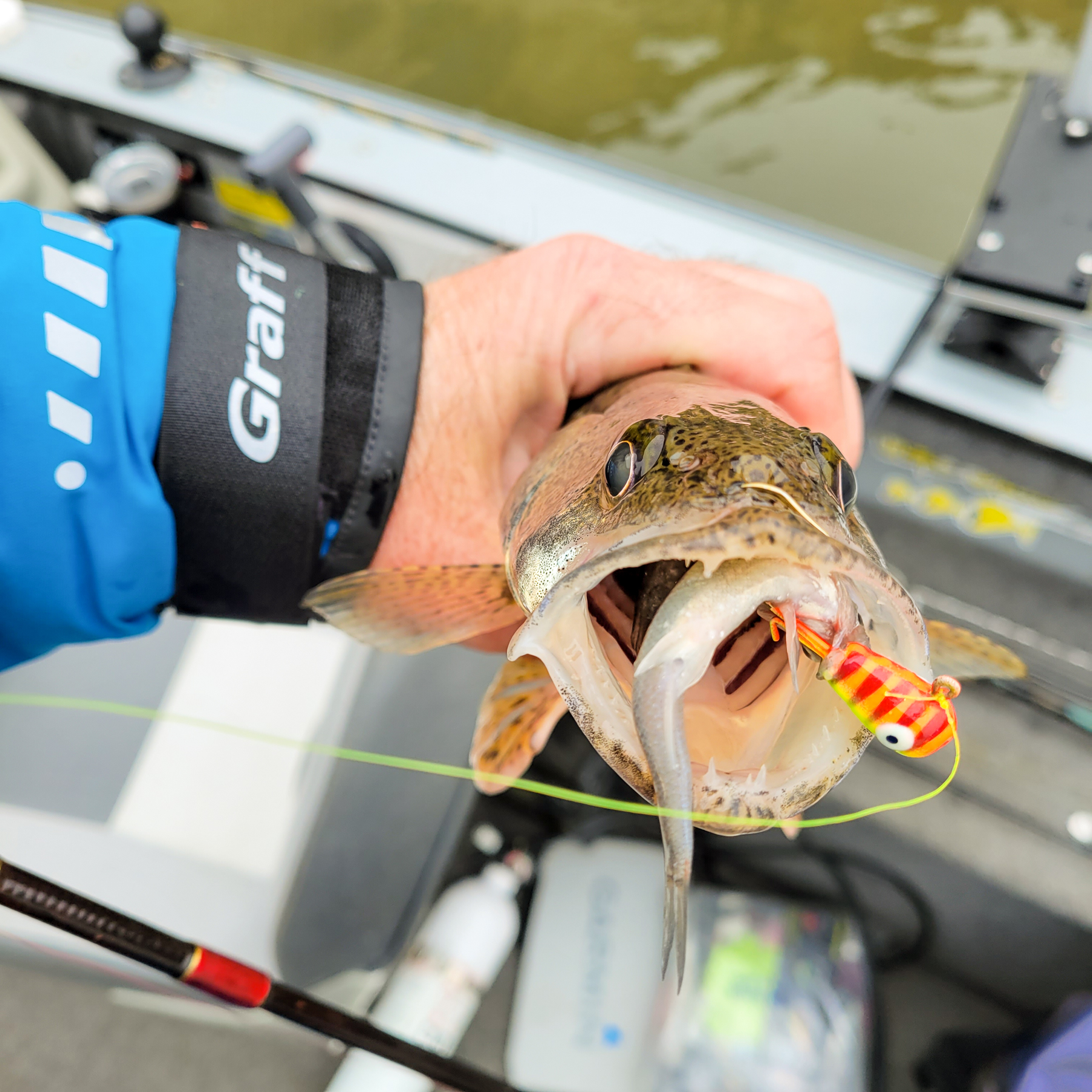
Often, the biggest fish are caught shallow. I like the action of a Ribb-Finn bouncing off the rocks and gravel. I’ll pitch a 1/8-ounce H2O jig with an Oystershell Ribb-Finn right up to the bank and let the current swing it back. The Ribb-Finn will attract any walleyes in the area.
If the bottom is full of debris, I’ll switch to the rod rigged with a Draggin’ Jig and Ringworm and pitch it in tight to cover. Walleyes often rest close to shore in high water, or be in there feeding, especially at low light and at night.
Once you fish a rod and reel you like, buy three more, so you can have the same feel when you switch presentations. I like a longer, medium-light-action graphite rod with an extra-fast tip, like a 6’8” St. Croix Eyecon Snap Jig rod. I use 10-pound-test bright yellow braided line, which is the same diameter as 2-pound mono. I’ll tie an 8-pound fluorocarbon leader between the three-way and my jig, unless the water is clear. With this super-sensitive combination, I can feel everything down below.
So, next time you go walleye fishing, give some of these jigging techniques a try. You may be rewarded with a trophy as well as some fine eaters!
MWO
SHARE THIS POST
Did you enjoy this post?
You can be among the first to get the latest info on where to go, what to use and how to use it!
Walt Matan
Walt Matan has been a writer and television host for MidWest Outdoors for 30 years. An avid ice and open-water fisherman, he currently lives in the Quad Cities on the shores of the Mississippi River. He is the product developer and brand manager for Custom Jigs & Spins, B-Fish-N Tackle, and Rippin Lips Catfish Tackle. For more information visit customjigs.com.
